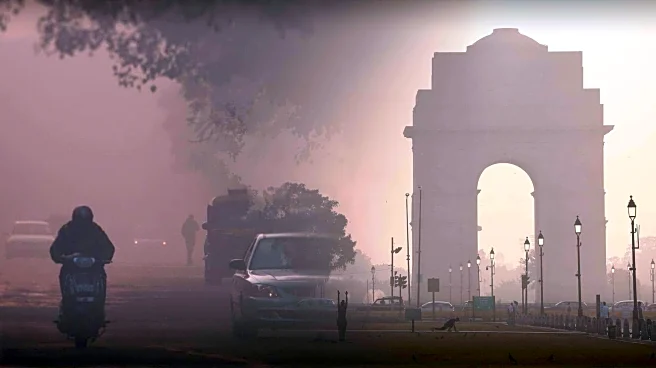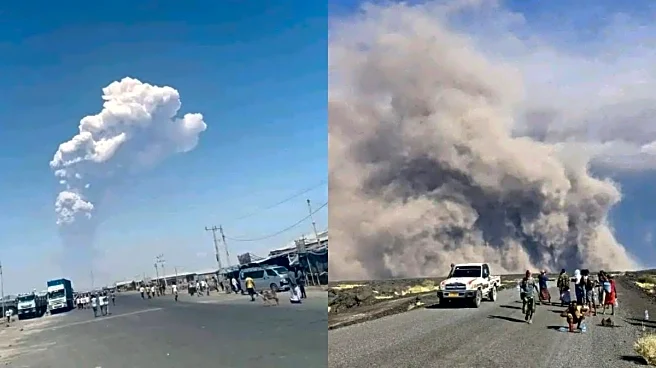Delhi continued to choke under a thick blanket of hazardous smog on Tuesday, even as a plume of volcanic ash from Ethiopia’s rare Hayli Gubbi eruption drifted over the region.
Despite speculation that the ash might worsen pollution levels, meteorologists maintained that its impact on surface air quality would remain minimal. Visuals from the AIIMS and Safdarjung Hospital areas showed dense grey smog engulfing the skyline, with the Air Quality Index (AQI) touching 323, firmly in the ‘very poor’ category.
Air quality deteriorates across Delhi-NCR
The overall AQI for Delhi stood at 363 on Tuesday, marking a slight improvement from Monday but still placing the city at the higher end of ‘very poor’. Several neighbourhoods, however, crossed into ‘severe’ levels early in the morning.
Rohini recorded
the worst AQI at 416, Anand Vihar followed at 401 while Jahangirpuri and Wazirpur both stood at 400 around 8 am.
Many other monitoring stations hovered dangerously close to the severe threshold, underscoring the persistent air crisis gripping the national capital.
The situation in the National Capital Region (NCR) mirrored Delhi’s distress.
Noida reported an AQI of 390, after entering the severe zone over the weekend. Ghaziabad recorded a very poor AQI of 348, Gurugram stood at 311 with Faridabad, though comparatively better, remained in the poor category at 222.
Across the region, visibility remained low and hospital visits for respiratory discomfort saw a noticeable uptick.
Ethiopian volcanic ash reaches Delhi
Late Monday night, Delhi witnessed the arrival of a high-altitude haze caused by a plume of volcanic ash drifting from Ethiopia’s Hayli Gubbi volcano, which erupted for the first time in nearly 12,000 years. The ash cloud travelled across the Red Sea, Yemen, Oman, and the northern Arabian Sea before reaching parts of northern India.
Delhi observing an unusual, diffused veil of haze expressed concern about whether the ash would worsen already toxic conditions. However, according to the India Meteorological Department (IMD), the plume is primarily confined to upper atmospheric layers.
IMD Director General M Mohapatra clarified that the volcanic ash was unlikely to cause any significant deterioration in Delhi’s surface-level air quality.
Since the plume remained at high altitudes, he explained, its effect would be limited to a hazy sky and possibly a marginal rise in temperatures due to its cloud-like behaviour.







/images/ppid_a911dc6a-image-17640448254938395.webp)

/images/ppid_a911dc6a-image-176404544047063153.webp)

/images/ppid_a911dc6a-image-176404286710753090.webp)

/images/ppid_a911dc6a-image-176404550095793340.webp)

